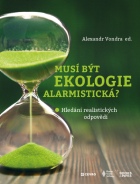
POKORNÝ, P. & KONOPÁSEK, Z. (2020): Lítáme v tom: Dialog o klimatu na pomezí vědy, politiky a aktivismu. In: A. Vondra, ed: Musí být ekologie alarmistická? Hledání realistických odpovědí. Brno: Books & Pipes. Str. 67-105
::::Paleoekolog Pokorný a sociolog Konopásek, jinak blízcí akademičtí kolegové, rozmlouvají o některých obecnějších souvislostech vědeckého pochybování nad současnou klimatickou politikou. Začínají u rozpaků přírodovědce nad tím, co si počít s ostře odmítavými až útočnými reakcemi širší veřejnosti vůči prezentaci odborného mínění, které jednoduše nezapadá do současného populárního kánonu. Tyto reakce nemají typicky charakter věcné disputace, ale dotýkají se přímo a výslovně osobní integrity, morálky a politického přesvědčení. Patří tohle do vědy? A pokud ano, tak jak? Co si má badatel s tímto rozměrem veřejné debaty počít? Paleoekolog se s takovými otázkami obrací na sociologa vědy, u kterého tuší nalézt porozumění. Sociolog se snaží naznačit komplikované rozhraní mezi vědeckým a politickým, jakož i choulostivost vztahů mezi odborným odstupem od věci a angažovaným ponorem do ní. Čerpá přitom nejen ze specifických zkušeností sociologa vědy, ale často dává na první pohled odtažité příklady z šířeji pojaté oblasti sociálních věd.
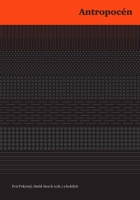
KONOPÁSEK, Z. (2020): Antropocén: Více než jeden, méně než dva. In: P. Pokorný & D. Storch, eds: Antropocén. Praha: Academia. Str. 32-50
::::Antropocén je pojmenování pro současnou situaci a zároveň specifické vidění světa, které k tomuto pojmenování vede. Pojem samotný se zrodil jako označení současné epochy geologického vývoje Země. Byl podpořený narůstajícím množstvím vědeckých údajů o komplexních a dlouho jen tušených dějích v tzv. planetárním systému, o kritické míře vlivu lidské činnosti na tento systém a o souvisejících globálních proměnách. Debaty o antropocénu dalece překročily snahy o formální geologické definování jeho počátku nebo popisy dílčích vědeckých nálezů. Obsah pojmu se rozšířil a rozmlžil. Antropocénem už není jenom nějaká „epocha“, od – do, „tam venku“, kterou lze při dostatečném vědeckém odstupu od světa za pomoci obrovských datových souborů občas zahlédnout. Antropocén zároveň označuje situaci, ve které stále zřetelněji vnímáme procesy, které nevratným a často hrozivým způsobem proměňují okolní svět a kterým nelze dost dobře rozumět na pozadí buď-anebo kategorií moderního rozumu, v prvé řadě na pozadí samozřejmého rozlišování mezi tzv. Přírodou a tzv. Společností či Kulturou. Důležitým se stává studium vztahů, a to napříč doménami, které jsme dosud považovali za nesouměřitelné či vzájemně se vylučující. Mění se nejen vztah přírodních a sociálních věd, ale také postavení vědy obecně: odvolávat se na „holá fakta“ a apolitičnost vědy přestává stačit; vědci se dostávají pod hodnotové a politické tlaky, na které nebyli zvyklí. Debaty o antropocénu byly v mnoha směrech připraveny debatami jinými, dřívějšími – povýtce zhusta na půdě sociálních či humanitních věd. Antropocenní rámec však přináší možnost, aby tyto debaty byly s přičiněním přírodních vědců doceněny, dále rozvinuty a lépe uzemněny.
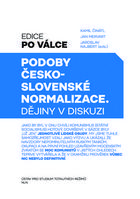
BARTLOVÁ, M. / BÍLEK, P. / KONOPÁSEK, Z. / REIFOVÁ, I. (2017): Diskuze o interdiciplinárních přístupech k normalizaci. In: K. Činátl, J. Mervart & J. Najbert, eds: Podoby česko-slovenské normalizace: Dějiny v diskusi. Praha: ÚSTR/NLN. Str. 81-101
::::
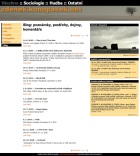
KONOPÁSEK, Z. (2017): K fenoménu Antropocén: Poznámky na okraj mezioborové debaty. Blog Zdeňka Konopáska, 22. 7. 2017. Dostupné na adrese http://zdenek.konopasek.net/index.php?m=16&b=16&i=3609
::::V Centru pro teoretická studia UK/AV ČR jsme začátkem roku 2017 začali probírat pojem antropocénu. Tímto slovem se nejčastěji vyjadřuje, že žijeme v epoše, ve které se člověk stal zásadní a hlavní silou, která formuje podobu planety. Antropocén je tedy název pro novou geologickou éru Země. V tomto textu se přimlouvám za složitější a širší chápání antropocénu – takové, které by otevíralo prostor pro mezioborovou diskusi. Jde o pracovní text, náčrt: připomínky a komentáře vítány. Pokud byste náhodou chtěli citovat, ujistěte se, že se mezitím neobjevila definitivní, oficiálně publikovaná verze.
KONOPÁSEK, Z. / KAREL, R. (2016): Kudy vedla cesta ke zcela osobitému pojetí vaší hudby? (rozhovor Romana Karla se Zdeňkem Konopáskem). In: Quod bene notandum - Liber secundus. Bruntál: J7K5/JeseKápě. Str. 125-126
::::Rozhovor ke kapele Noční pták a k jejímu vystoupení v SVČ Rýmařov při výroční výstavě Volného sdružení Octopus, dne 6. srpna 2016.

BROŽ, L. / STÖCKELOVÁ / KONOPÁSEK, Z. (2015): Symetrie je často stranická: rozhovor se Zdeňkem Konopáskem. Cargo, 13 (2): 117-132
::::

KONOPÁSEK, Z. (2013): Sociologie, na které ne/záleží. Blog Zdeňka Konopáska, 24. 3. 2013. Dostupné na adrese http://zdenek.konopasek.net/index.php?m=16&b=16&i=2757
::::Nezávazný, lehkonohý vztah k teoriím tedy vede k tomu, že si jako sociologové zvykáme na nespoutané žvanění. Co nedovolí jedna myšlenková tradice, dovolí jiná. Přepnutí je bezbolestné. A je-li to ve jménu angažovanosti a v zájmu oslovení širokého publika, platí to dvojnásob. Vykecáme se ze všeho. Ze slov, co říkáme či neříkáme, se svět nezboří. Je to přece jenom sociologie, ne?... Líp už cestu k bezvýznamnosti a vyprázdnění vlastního oboru dláždit nemůžeme.

KONOPÁSEK, Z. (2013): Simulakrum jako nadávka? Blog Zdeňka Konopáska, 29. 1. 2013. Dostupné na adrese http://zdenek.konopasek.net/index.php?m=16&b=16&i=2728
::::Bělohradskému se opět podařilo vyprovokovat mne k sepsání malého sociologického komentáře - víc o sociologii než o samotných presidentských volbách.
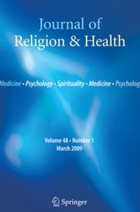
KONOPÁSEK, Z. / PALEČEK, J. (2012): Apparitions and possessions as boundary objects: An exploration into some tensions between mental health care and pastoral care. Journal of Religion and Health, 51 (3): 970-985
::::Apparitions and possessions can be taken as genuine spiritual events or as symptoms of psychopathology. We focus upon occasions when the two seemingly conflicting “interpretations” co-exist in order to explore these phenomena as a kind of boundary objects – polymorphous realities stable and graspable enough, yet belonging to different worlds at once. Related diagnostic knowledge is often uncertain and always incomplete. Yet it enables authoritative and effective professional interventions. We conclude by discussing the relevance of such a view for contemporary efforts to validate patients’ spiritual experiences within mental health care.
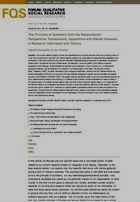
KONOPÁSEK, Z. / PALEČEK (2011): The principle of symmetry from the respondents’ perspective: Possessions, apparitions and mental illnesses in research interviews with clerics. Forum Qualitative Sozialforschung / Forum: Qualitative Social Research, 12 (1): čl. 12, http://nbn-resolving.de/urn:nbn:de:0114-fqs1101129
::::We study how experiences such as hearing the voice of the Lord or having a vision of Virgin Mary are dealt with in psychiatry and catholic pastoral practice. How the status of these phenomena is negotiated by the participants? Under what conditions they become an instance of legitimate religious experience or, alternatively, symptoms of mental illness? We approach the study of these issues “symmetrically” - we do not prefer a priori medical or spiritual explanations. Some time ago, we demonstrated and explained such an approach (which is common, e.g., in contemporary sociology of science), and its relevance for our research, in an analytic paper on the movie “The exorcism of Emily Rose” (2005). The paper discusses a highly ambiguous relationship, pictured in the film, between medical and spiritual interpretation of the story of a young girl who was considered possessed by demons and who died after unsuccessful exorcism (Konopásek & Paleček 2006). Now, the question is: can such a symmetrical approach be of any relevance also for people we are studying? In an attempt to give an answer, we have interviewed four catholic priests on this issue. The priests had been asked to watch the movie on Emily Rose and read our paper on it in preparation for the interview. Based on these discussions (and also on our current research in general), we would like to shed some light on whether and in what ways our specific epistemic perspective coheres with the views and positions of our respondents; and also, how this reflexive research experiment contributed to our own understanding of the role of the symmetry principle in our current research project.

 ? - recenze vyjde v časopise Biograf
? - recenze vyjde v časopise Biograf
 se objevily informace o tom, co lze snad prý během března čekat v nové, sedmé verzi mého oblíbeného analytického programu
se objevily informace o tom, co lze snad prý během března čekat v nové, sedmé verzi mého oblíbeného analytického programu






